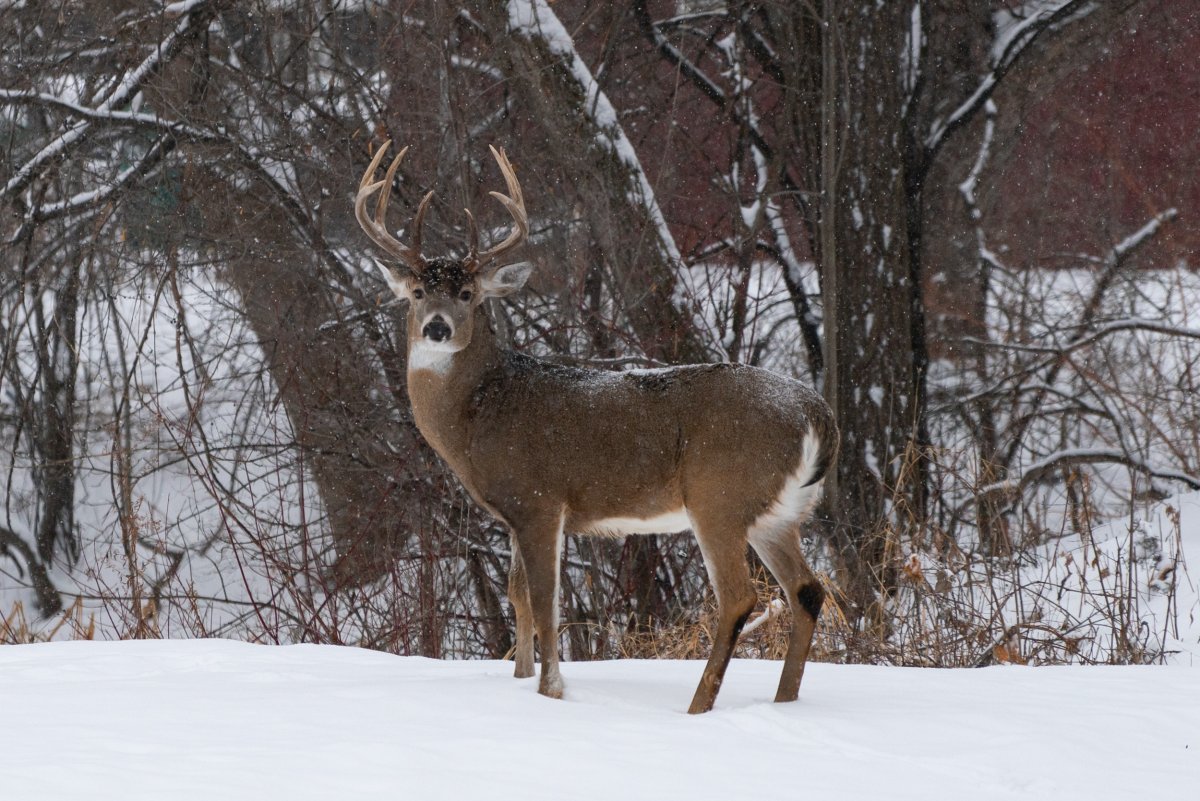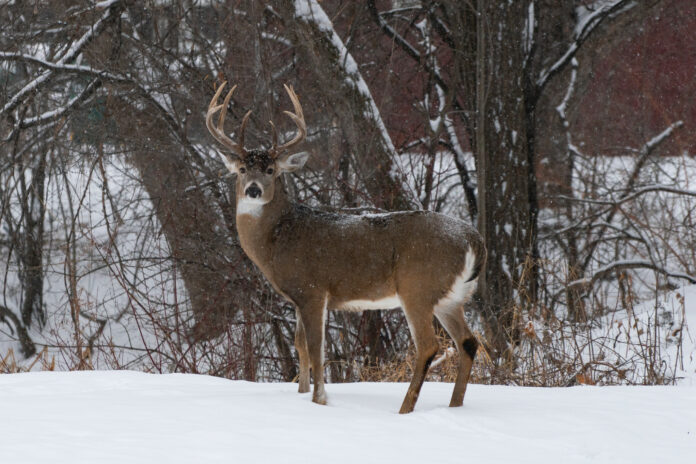Counties in at least 31 U.S. states have reported cases of an illness dubbed the “zombie deer disease” in freely roaming cervids, according to the latest figures, as fears emerge that it could jump the species barrier into humans.
As of November, cases of chronic wasting disease (CWD) among wild deer, elk and moose have been reported across hundreds of counties in the continental U.S., as well as three provinces in Canada. Cases have also been found among farmed deer and elk populations, and elsewhere in Norway, Finland, Sweden and South Korea.
CWD earned its colloquial moniker as it attacks the nervous system of its host animal, with symptoms including drastic weight loss, stumbling, drooling and listlessness. The disease may take over a year before an infected animal develops symptoms and is fatal to animals, with currently no treatment or vaccine.
CDC
According to the Centers for Disease Control and Prevention (CDC), the nationwide prevalence of CWD in free-ranging deer and elk is “relatively low,” but infection rates can be much higher in localized areas where it has become established in the wild cervid population.
While states across central America, from Idaho to Alabama, as well as the mid-Atlantic and Great Lakes regions, have recorded cases, a map of the 414 affected counties shows the cases tend to be clustered in particular areas.
Much of Wyoming has seen affected deer and elk populations, which has also spilled over into surrounding states. There are other clusters in southern Wisconsin, northwest Arkansas, western Tennessee and one from Pennsylvania into Maryland and the Virginias.
The official, nationwide count is based on data from state wildlife agencies as well as the U.S. Geological Survey. The CDC cautioned that “it is possible that CWD may also occur in other states without strong animal surveillance systems, but that cases haven’t been detected yet,” and that “the affected areas are likely to continue to expand.”
It said that CWD was first identified in America among captive deer in Colorado in the late 1960s, before being found in wild deer in 1981. The following decade, it was found in northern Colorado and southern Wyoming.
The CDC said that in several locations, infection rates may have exceeded 10 percent of the wild deer and elk population, with localized infection rates of more than 25 percent in some instances. It added that infection rates among captive deer can be much higher, with one herd seeing 79 percent fall ill with the disease.
CWD is thought to spread among animals through bodily fluids, or indirectly through contaminated soil, food and water. The close contact and shared sources of nourishment among captive animals make the risk of infection far higher.
The CDC says that, to date, there have been no recorded cases of CWD being contracted by humans, but recommends hunters test animals they kill before eating their meat.
Multiple scientific studies suggest that apes, such as certain types of monkeys, can contract CWD when given infected meat, as well as mice that have been given some human genes. These studies “raise concerns that there may also be a risk to people and suggest that it is important to prevent human exposures,” the CDC has said.
Fresh fears were raised in November, after a case was detected for the first time in Yellowstone National Park, while CWD has been found in 800 samples across Wyoming.
At the time, Cory Anderson, a researcher at the University of Minnesota and co-director of its Center for Infectious Disease Research and Policy’s CWD program, warned that the disease was already a “slow-moving disaster.”
“The mad cow disease outbreak in Britain provided an example of how, overnight, things can get crazy when a spillover event happens,” he told The Guardian newspaper. “We’re talking about the potential of something similar occurring. No one is saying that it’s definitely going to happen, but it’s important for people to be prepared.”

AaronP/Bauer-Griffin/GC Images
Uncommon Knowledge
Newsweek is committed to challenging conventional wisdom and finding connections in the search for common ground.
Newsweek is committed to challenging conventional wisdom and finding connections in the search for common ground.


